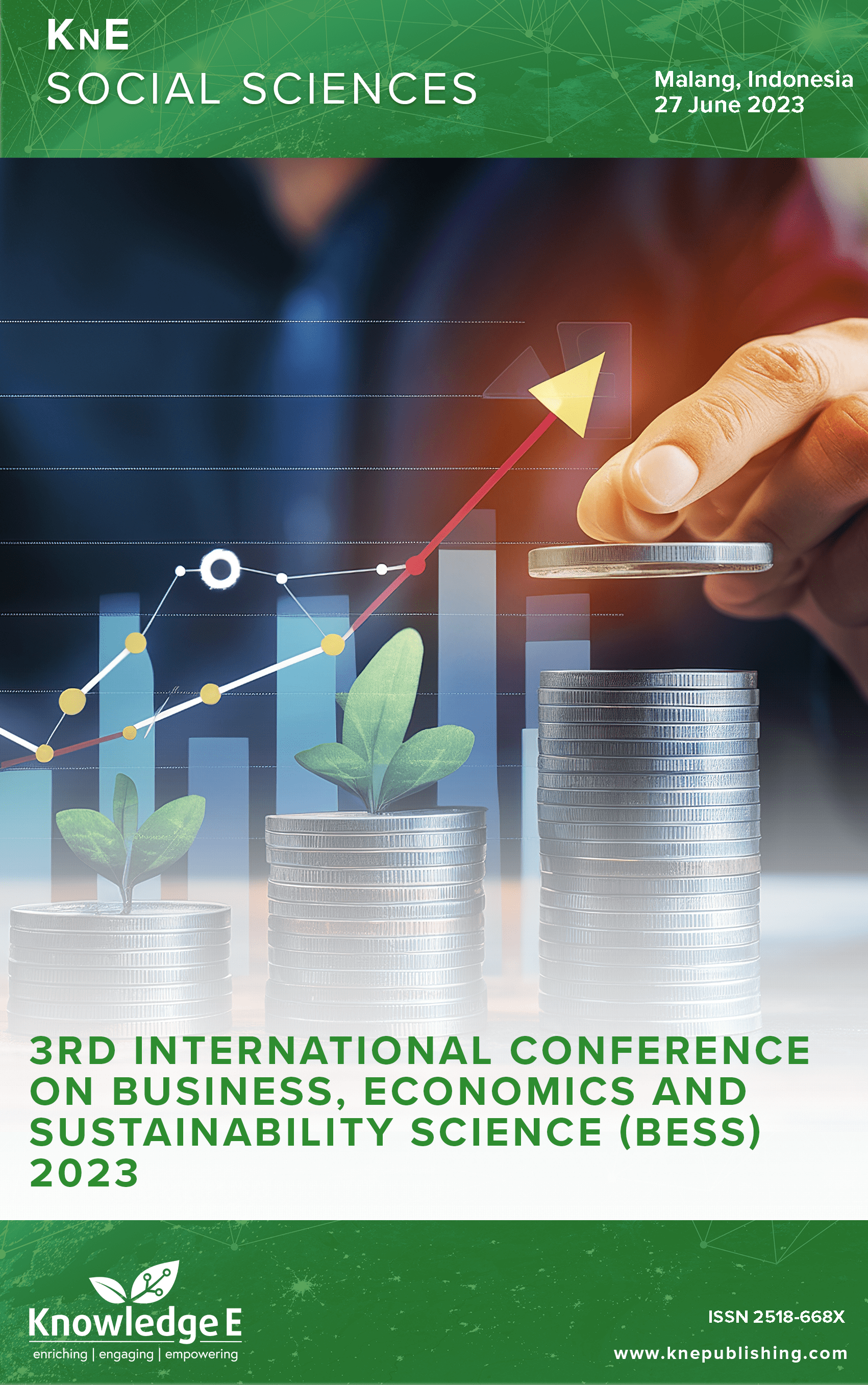Influence of Education Level and Cigarette Consumption on Poverty in RW 1 RT 1 Ngaglik Batu, East Java
DOI:
https://doi.org/10.18502/kss.v9i21.16681Abstract
This research aims to determine the effect of cigarette consumption and community education level on income in Ngaglik Village RT.01 RW.01 Batu City. This analysis uses independent variables, namely cigarette consumption and education level. The dependent variable was people’s income. This research uses primary data obtained from distributing questionnaires to 48 family cards occupying Ngaglik Subdistrict RT.01 RW.01 Batu City. The analysis was done using the Slovin Method. Then a normality test, two variable linear regression test, multicollinearity test, heteroscedasticity test, and autocorrelation test were carried out with the help of SPSS tools. Firstly, the results of this study showed that cigarette consumption had no significant effect on income, while education level did. Second, the head of the families in this study were mostly men. Third, it is very important to educate about the dangers of smoking so that people have knowledge about not smoking and alleviating poverty.
Keywords: cigarette consumption, education level, income
References
Achyanadia S. The role of educational technology in improving the quality of human resources. Journal of Educational Technology. 2016;5(1).
Afif MN. (2018). Analysis of the influence of poverty, per capita income, cigarette prices, and cigarette production on cigarette consumption per capita. In Thesis (p. vii).
Aisyah, MF (2015). The influence of human resource quality, work professionalism, and commitment on the performance of Jember Regency PDAM Employees. E– Journal of Business Economics and Accounting, IV (I).
Aini EN. The influence of education level on the level of community welfare in Kesatrian Subdistrict, Malang City. Technomedia Journal. 2018;3(1):58–72. DOI: https://doi.org/10.33050/tmj.v3i1.333
Almizi M, Hermawati I. Efforts to alleviate poverty by reducing cigarette consumption in Indonesia. PKS Journal. 2018;17(3):239–55.
Armstrong-James, M. (1997). Origin of circuit modifications within the rat S1 barrel cortex following changes in tactile experience. Experimental Neurobiologiae Acts, 57 (5).
Assari S, Bazargan M. Education level and smoking: diminishing returns for lesbian, gay and bisexual individuals. Behav Sci (Basel). 2019 Sep;9(10):103. DOI: https://doi.org/10.3390/bs9100103
BPS. (2018). Poverty Profile in Indonesia .
BI. (2023). Indonesia’s growth remains strong. Bank Indonesia. https://www.bi.go.id/id/publikasi/ruang-media/news-release/Pages/sp_2511423.aspx
BPS. (2023a). Percentage of smoking in population over 15 years by province. https://www.bps.go.id/indicator/30/1435/1/persentase-merokok-pada-penbangunumur- 15-tahun-menrut-provinsi.html
BPS. (2023b). Poverty profile in Indonesia March 2023. Central Bureau of Statistics. https://www.bps.go.id/pressrelease/2023/07/17/2016/profil-kemiskinan-diindonesia- maret-2023.html
Scholar DG. The relationship between government transfers for social protection against smoking behavior in poor households in Indonesia. Indonesian Population Journal. 2018;13(2):133–42.
Firdaus M, Apriliani T, Wijaya A. (2013). Fishermen’s household expenditures and their relationship to poverty. Center for Maritime and Fisheries Socioeconomic Research, 49–60.
Friedman AS, Horn SJ. Socioeconomic disparities in e-cigarette use and transition from smoking. Nicotine Tob Res. 2019 Sep;21(10):1363–70. DOI: https://doi.org/10.1093/ntr/nty120
Julianto, A. (2019). Collaboration of non-formal, informal and formal education in youth education in the special region of Yogyakarta. DIKLUS: Journal of Out-of- School Education, 3 (volume 3), 14–22. DOI: https://doi.org/10.21831/diklus.v3i1.24644
Khusaeni A, Khusaini K, Widiarti A. The impact of age, family structure, and level of education on consumer (visitor) behavior at tourist destinations in Tangerang Regency. Journal of Innovation in Economic Education. 2021;2017(2):175–86. DOI: https://doi.org/10.24036/011129570
Kina, A. (2020). The influence of human resource quality and work professionalism on employee performance at PT. PIN (Persero) Implementing the Tanjung Enim Bukit Asam Power Plant. Journal of Media Wahana Ekonomika, 355–366.
Kurniawan, K. (2022). The Complexity of the Problem of Poverty and the Tobacco Consumption Circle in Indonesia. Socio Informa: Study of Social Problems and Social Welfare Efforts, 8 (1).
Nabila FS, Umro J. HIGHER EDUCATION FOR WOMEN (Case Study in Curahdringu Village, Tonga District, Probolinggo Regency). AL-HIKMAH: Journal of Islamic Education and Religious Education. 2020;2(2):136–48.
Ningtiyas, DS, Indriayu, M., & Nugroho, JA (2022). The influence of entrepreneurship education and internal locus of control. Journal of Innovation in Economic Education, 12 (2019), 23–31. DOI: https://doi.org/10.24036/011165060
Nur Fauziah D, Ayu Nur Wulandari A. Measurement of Bukalapak.Com Service Quality on Consumer Satisfaction Using the Webqual 4.0 Method. J Comput Sci Technol. 2018;3(2):173–80.
Oktaviani, RA, Nurcholis, & Suhaeri, F. Cigarette expenditure in households that consume them. Economics and Business: Periodical Publications, Conceptual Ideas, Research Results, Studies, and Applied Theory. 2022;26(01):1–11.
Pratama RA. Factors influencing cigarette consumption in poor households. At. FEB UNDIP; 2018. p. vii.
Robinson P, Arsani AM. (2020). The influence of education level, welfare level and income on daily cigarette consumption of the adult population in Indonesia in 2015. Bappenas Working Paper, 3 (1), 75–87. DOI: https://doi.org/10.47266/bwp.v3i1.57
Sari, W., Dasopang, GA, A. R., Hasfiezetty, M.Y., S., R, D., & S, R. Anti-poverty policy government program in alleviating poverty in Indonesia. Journal of Research Innovation. 2022;2(10):3209–18.
SEATCA. (2019). Tobacco control atlas: ASEAN region. In Southeast Asia Tobacco Control Alliance.
Situspoe . (2000). The specificity of Indonesian Cigarettes: Issues with PP no. 81 of 1999 concerning the safety of cigarettes for health . Gramedia Widiasarana Indonesia.
Sugiharti, L., Sukartini, N.M., & Handriana, T. (2015). Cigarette consumption based on individual characteristics in Indonesia. Journal of Applied Quantitative Economics .
Suliankatchi RA, Sinha DN, Rath R, Aryal KK, Zaman MM, Gupta PC, et al. (2019). The use of smokeless tobacco is “replacing” the smoking epidemic in the Southeast Asia region. In Nicotine and Tobacco Research.
Surjono ND, Handayani PS. The impact of income and cigarette prices on cigarette consumption levels in poor households. BPPK Journal: Financial Education and Training Agency. 2013;6(2):19–33.
Tala O, Karamoy H. Profitability and leverage analysis of profit management in manufacturing companies on the indonesian stock exchange. Accountability. 2017;6(1):57. DOI: https://doi.org/10.32400/ja.16027.6.1.2017.57-64
Trisnawati, W. (2021). Children’s Education in the Covid-19 Era Family . 5 (1), 823–831. https://doi.org/https://doi.org/10.31004/obsessi.v5i1.710.
Wainwright, E. (2017). Education, child rearing and the family: The social geography of family learning . 43 (2), 213–229. https://doi.org/10.1002/berj.3262. DOI: https://doi.org/10.1002/berj.3262

